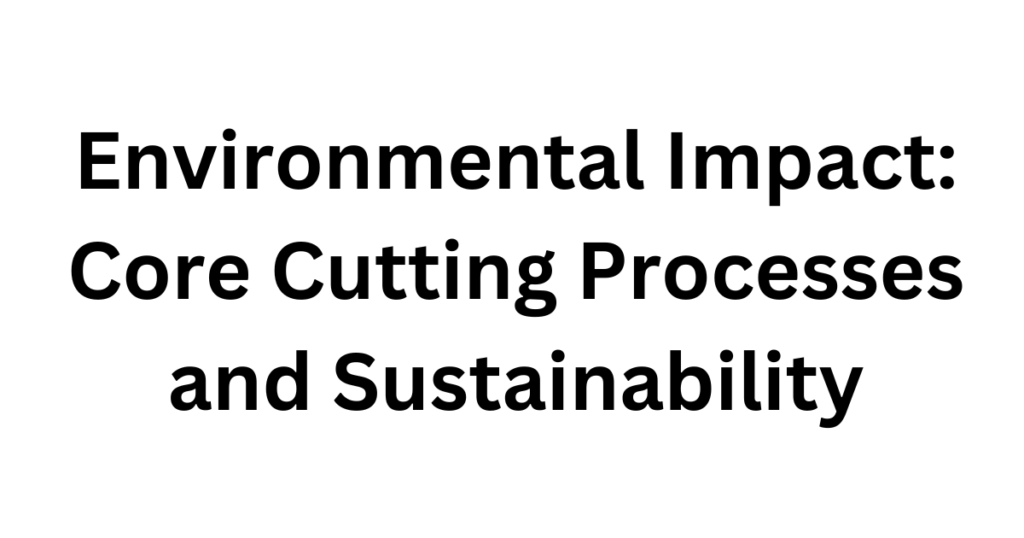Core cutting processes play a crucial role in various industries, from construction and mining to geological research. These processes involve drilling and extracting core samples from the earth for analysis and testing. While core cutting is essential for scientific research and resource extraction, it can have significant environmental consequences if not managed properly. This article delves into the environmental impact of core cutting processes, highlighting the importance of dust control, waste management, and sustainable practices.
Dust Control:
Dust is a common byproduct of core cutting activities and can pose significant environmental and health risks. Here’s how core cutting processes impact the environment in terms of dust:
1. Air Quality: When core samples are drilled and cut, they produce fine dust particles that can become airborne. These particles, if not controlled, can negatively affect air quality in the vicinity of the operation. Breathing in dust can be harmful to human health and can also harm plant and animal life.
2. Soil and Water Contamination: Dust from core cutting can settle on the ground and, when it rains, wash into nearby water bodies, causing contamination. Contaminated soil and water can have long-lasting effects on ecosystems.
Solutions for Dust Control:
- Dust Collectors: Installing dust collection systems can help capture and contain airborne particles, reducing their dispersion.
- Water Spraying: Spraying water at the drilling and cutting site can help settle dust. However, this method may require careful water management to avoid further environmental issues.
- Personal Protective Equipment (PPE): Workers involved in core cutting processes should wear appropriate PPE to protect themselves from inhaling dust.
Waste Management:
Core cutting generates various types of waste materials, and their disposal can have a significant environmental impact. Here’s how core cutting processes affect the environment in terms of waste management:
1. Core Samples: After the core is extracted and cut, there is often a surplus of core material. Disposing of these samples without consideration for their value can lead to unnecessary waste.
2. Used Tools and Equipment: The tools and machinery used in core cutting processes can wear out or become obsolete. If not disposed of properly, they can end up in landfills, contributing to environmental degradation.
Solutions for Waste Management:
- Reuse and Recycling: Core samples can be stored for future research or reused in various applications. Tools and equipment can be recycled or refurbished to extend their lifespan.
- Proper Disposal: When disposal is necessary, it should be done in accordance with local regulations and environmental best practices, ensuring that waste materials do not harm the environment.
Sustainable Practices:
Promoting sustainable practices in core cutting processes is essential to minimize the environmental impact. Here are some steps to make core cutting more sustainable:
1. Efficient Drilling: Employ advanced drilling techniques and technologies to maximize the efficiency of core extraction, reducing the need for unnecessary drilling.
2. Data Sharing: Collaborate and share data with other organizations to prevent redundant drilling efforts, thereby reducing the overall environmental footprint.
3. Environmental Assessments: Before initiating core cutting operations, conduct environmental impact assessments to identify potential risks and develop mitigation strategies.
4. Renewable Energy: If feasible, power core cutting equipment with renewable energy sources, such as solar or wind power.
Conclusion
core cutting processes are integral to many industries, but their environmental impact cannot be overlooked. Dust control, waste management, and sustainable practices are vital aspects to consider when aiming to minimize the ecological footprint of these activities. By adopting responsible practices and embracing sustainable technologies, we can ensure that core cutting remains a valuable tool for research and resource extraction without harming the environment.
